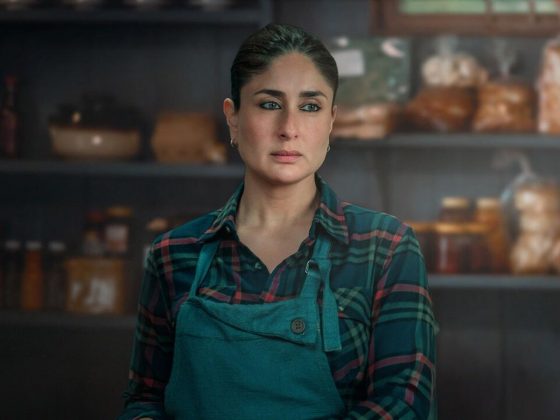As a show, “Sex Education” had already surpassed the premise it started with by the time Season 3 rolled around. The conceit of Otis Milburn opening up a sex therapy clinic in his high school worked two-fold: educating and debunking myths as well as helping horny teenagers control their hormones, while simultaneously the comedy arose from the protagonists being “sex therapists” yet still being ruled by their own hormonal emotions. “Sex Education” became a traditional high school drama in Season 3, with character arcs driving the plot rather than the plot driving the character arcs. But at least that season still had semblances to the plot threads from its pre-existing season, which it wrapped up in its own weird, witty fashion.
With Season 4, creator Laurie Nunn does both a soft reboot and an ending to the series. But Nunn has an added responsibility. In an era where discussions around sexuality, gender politics, gender fluidity, use of pronouns, and reclamation of identity are more important than ever, changes within a generation are already causing a chasm from the generation being shown in the show to the generation the show is targeted to. For Gen-Z, the college being shown—progressive, open-minded, student-led, dealing with positive manifestation, having an inherent belief in kindness, and protesting directly against the shackles of society—is the new normal. For the generation the show is actually directed towards—the tail end of Gen-Z to the millennials and above—such changes feel like a chasm unable to be crossed or too much work to be crossed.
Thus, the show, through new characters as well as one-season of older characters like Cal, is exploring the newer dimensions of dating and sexual changes and exploring them by bringing back the sexual therapist conceit again. With that conceit, however, come new issues for Otis, as he would have to reconcile with the already-existing sexual therapist in the school. Otis would also have to deal with a frazzled Jean Milburn dealing with post-natal depression and a new baby sister in the house. Joan Milburn, on the other hand, has to confide in going back to her job, albeit via the format of a new podcast show, the return of her sister, and older wounds springing up as a result of that strained relationship.
Meave, on the other hand, would have to deal with life in America, recontextualizing her career and her dream as a writer, and trying to maintain a long-distance relationship with Otis. Eric Effiong will have to contend with his being a black queer person and also being Christian, and how religion is responsible for stifling him from fully exploring his identity. Let us not forget Adam, who has to deal with his bisexuality, his relationship with his separated parents, and their subsequent development throughout the season.
As it stands, it is a lot. The new characters added to this don’t help the equation. The show, more than ever, feels like it is tackling more than it could chew on. But again, because “Sex Education” focuses on characters’ motivations driving the plot, when the characters are older characters and their arcs lead to a closure in a season, you feel for these characters. For the newer characters, though, all of them feel more like manifestations of ideas than proverbial characters with flesh and blood in their own right. But it is the handling of these characters and dealing with and holding a mirror towards them that helps Season 4 rise above its triviality and mediocrity, giving it added weight.
As a result, however, the writing becomes blunter because characters are more involved in reconciliation and spelling their motivations out, and sometimes those do lack nuances. Nunn’s writing is almost fighting against the structure of televised storytelling. There is, of course, the overarching theme of parents managing to connect with their children, kids of different genders and sexualities managing to be progressive and be open to dialogue rather than only indulge in positive and macro concepts of ideas without actually implementing them. The final theme running through the strand of this show is kindness and understanding, and that almost wrestles against the basic tenets of television writing, where conflict breeds character and drama. “Sex Education” tries to fight it by inserting drama quantitatively rather than organically. Subversion of characters and their arcs feel almost as nebulous as teenagers’ brains working in overdrive, where they are confused in their headspace and want to break away from relationships and forge new ones. The adults, however, are no different, and as the character arc of Adam’s father shows, in this brave new world, perhaps they are also confused, even more than the students, straddled by experiences of the world they have lived in.
But there is positivity and kindness in the writing of this show, devoid of any cynicism. Nunn and her team love these characters, want them to survive in this ever-changing world, and want them to engage, build bridges of positive communication, and live life able to handle any conflict. Do all of the arcs work? Not really, because Eric dreaming and hallucinating his version of God is one of those tropes that feels tired and sort of half-baked. Otis’ confusion at Eric’s anger is mirrored by us as well, because, unlike the newer characters, this arc of Eric hasn’t been laid throughout the previous seasons, and thus it feels less organic.
However, the creators’ love of these characters overall is very moving, especially for the adults more than the children, and as a result, perhaps we too feel The Beatles’ song as much as Otis does: “Let it Be”. “Sex Education” doesn’t end in the way its fans expected it to, but it does end with an emotional quotient far larger than more streaming services, with an active attempt at bridging the generational gap as much as the gap between the audience and the characters. As an attempt, it largely succeeds, even though it barely touches the highs of the first two seasons.
Sex Education is now streaming on Netflix.











